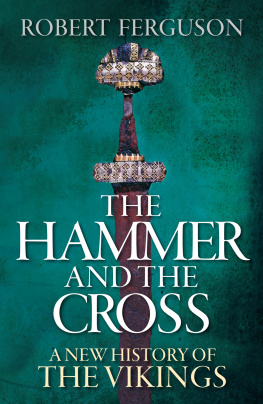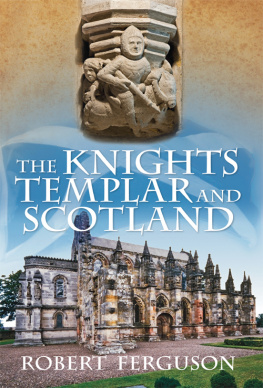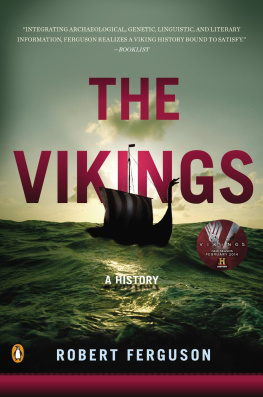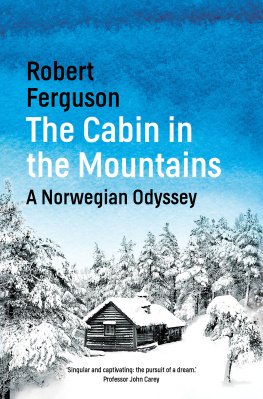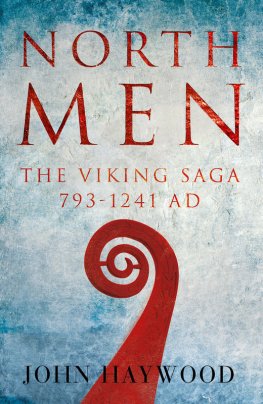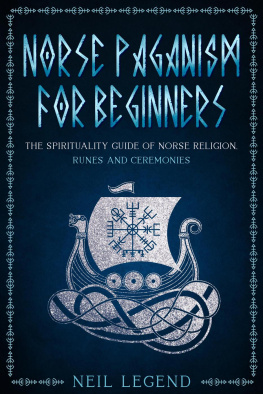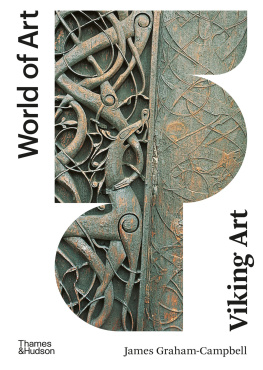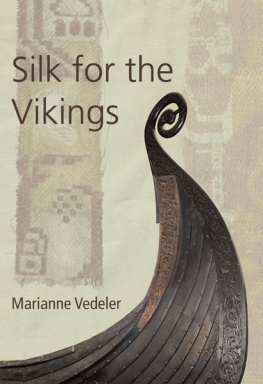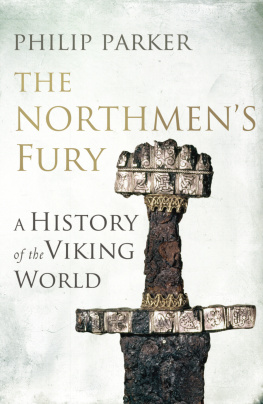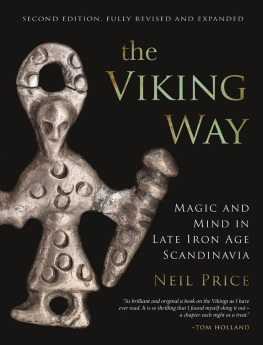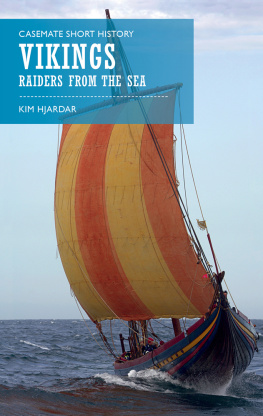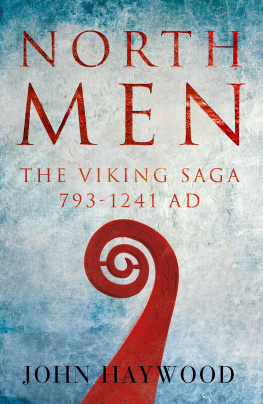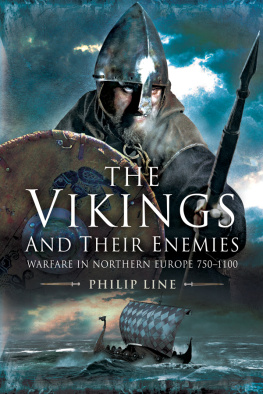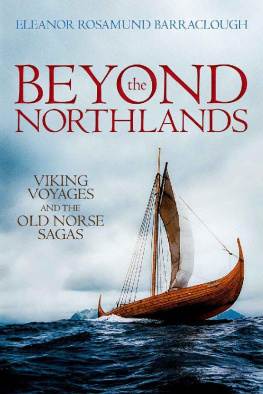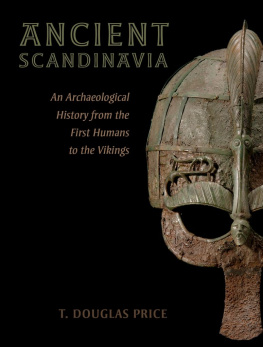ROBERT FERGUSON
The Hammer and the Cross
A New History of the Vikings

ALLEN LANE
an imprint of PENGUIN BOOKS
ALLEN LANE
Published by the Penguin Group
Penguin Books Ltd, 80 Strand, London WC2R 0RL , England
Penguin Group (USA) Inc., 375 Hudson Street, New York, New York 10014, USA
Penguin Group (Canada), 90 Eglinton Avenue East, Suite 700, Toronto, Ontario, Canada M4P 2Y3
(a division of Pearson Penguin Canada Inc.)
Penguin Ireland, 25 St Stephens Green, Dublin 2, Ireland
(a division of Penguin Books Ltd)
Penguin Group (Australia), 250 Camberwell Road, Camberwell, Victoria 3124, Australia
(a division of Pearson Australia Group Pty Ltd)
Penguin Books India Pvt Ltd, 11 Community Centre, Panchsheel Park, New Delhi 110 017, India
Penguin Group (NZ), 67 Apollo Drive, Rosedale, North Shore 0632, New Zealand
(a division of Pearson New Zealand Ltd)
Penguin Books (South Africa) (Pty) Ltd, 24 Sturdee Avenue, Rosebank, Johannesburg 2196, South Africa
Penguin Books Ltd, Registered Offices: 80 Strand, London WC2R 0RL , England
www.penguin.com
First published 2009
Copyright Robert Ferguson, 2009
The moral right of the author has been asserted
All rights reserved
Without limiting the rights under copyright
reserved above, no part of this publication may be
reproduced, stored in or introduced into a retrieval system,
or transmitted, in any form or by any means (electronic, mechanical,
photocopying, recording or otherwise) without the prior
written permission of both the copyright owner and
the above publisher of this book
ISBN: 978-0-14-192387-1
Get off this estate.
What for?
Because its mine.
Where did you get it?
From my father.
Where did he get it?
From his father.
And where did he get it?
He fought for it.
Well, Ill fight you for it.
Carl Sandburg, The People, Yes
The activity of being a historian is not that of contributing to the elucidation of a single ideal coherence of events which may be called true to the exclusion of all others; it is an activity in which a writer, concerned with the past for its own sake and working to a chosen scale, elicits a coherence in a group of contingencies of similar magnitudes. And if in so new and delicate an enterprise he finds himself tempted into making concessions to the idiom of legend, that perhaps is less damaging than other divergences.
Michael Oakeshott, The Activity of Being an Historian
List of Illustrations
13 A bronze statue of Freya, the goddess of fertility. (photograph: Museum of National Antiquities, Stockholm, Sweden)
List of Maps
A Note on the Language
I regret I have been no more successful than most other Scandinavianists in finding a method of rendering names, terms and phrases from Old Norse and modern Norwegian, Swedish and Danish into English in a way that adequately conveys their pronunciation to English readers. I have settled for a fairly thoroughgoing anglicization that involves removing most of the diacritics and ligatures, leaving in just a few as a reminder of the exotic nature of the original forms. Both and are pronounced long (aw), and is voiced th as in the.
Introduction
In a recommendation from 1806 on the conditions and needs of a planned Danish National Museum the Danish historian Rasmus Nyerup wrote this on the nature of pre-Christian history:
Everything stemming from ancient times and before the introduction of Christianity to these lands can properly be described as infinitely old. With the coming of Christianity we acquired better writing materials than rocks and trees, and faster scribes than the runemasters of old All that happened before, everything from ancient heathen times we see swirling before our eyes as though in a thick fog, in a vast space. We know that it is older than Christianity, but if it be a few years, or a few hundred years, or maybe even a few thousand years, is all a matter of conjecture.
When in 1816 the Danish government went ahead with its plans for a national museum, responsibility for ordering the large collection of finds stored in the loft of Copenhagens Trinitatis Church was given to Christian Jrgensen Thomsen, the son of a wealthy city merchant who in his youth had become interested in archaeology. Thomsen decided to try to bring some order to this vague and diffuse idea of a public past. On entering the loft for the first time, he reported, his general impression was of items randomly scattered in dust and disorganized disarray, hidden away in chests and baskets, among bits of material and paper. It was total chaos. He began by grouping the articles according to composition and function. They included tools and weapons made of stone; weapons and other items associated with combat made of bronze; articles made of iron; household items; ornamentation; urns containing incinerated remains; and a class of sundry other items. With the exhibits sorted into these three basic groupings of stone, bronze and iron, an exhibition opened to the public in the Trinitatis Church loft in 1819. This was the first time the tripartite division of the past into Stone, Bronze and Iron Ages was used.
Thomsens original aim had been merely to solve the practical problem of exhibiting the finds coherently. When he began to study the implications of his own system, however, he realized that it almost certainly described a forward movement in time from an older to a younger period and began to refine it accordingly, introducing sub-divisions within each of the three groups. A full presentation of his ideas appeared in book form in 1836. Translated into English as A Guide to Northern Antiquities in 1848, its principles were quickly accepted and adopted throughout Europe. Further sub-divisions in the groupings have been made by each of the Scandinavian countries. In Sweden the Later Iron Age is divided into Wendel and Viking Ages, the former covering the period c.550800 AD and taking its name from a number of ship burials excavated near Vendel in northern Uppland, the latter beginning with the raids by Heathen Scandinavians on Christian targets in the British Isles in 793. The Danes prefer the term Germanic Iron Age for the earlier period, and in Norway it is known as the Merovingian Period, after the Frankish Merovingian dynasty that was the dominant power in Europe from about 460 to 751. The warrant for the creation of a particular Viking Age within the Iron Age was the number of finds from the later part of the period associated with seafaring and returning warriors. So familiar has Thomsens tripartite division of the past into a Stone, a Bronze and an Iron Age become, so complete the authority it has acquired, that we easily forget its comparatively recent vintage and attribute to it a degree of reality that it scarcely has a right to. If astronomers can deprive Pluto of its status as a planet then it is possible that future historians will become so frustrated by the constrictions of inherited periodization that the whole system of archaeological time will one day be overhauled, with attendant redefinitions, promotions and demotions.
And in such an event, the Viking Age would probably occasion an unusual amount of headscratching, for it eludes almost every attempt at packaging and labelling. The British start their insular Viking Age In the 1970s the Uppsala-based British historian Peter Sawyer divided the insular Viking Age into two, with a first period extending from 793 to the fall of the Viking kingdom of York in 954 and a second from the resumption of Viking raiding in about 980 to the conquest of England in 1013 by the Danish King Sven Forkbeard and his son Cnut. As a general survey of the whole field of Viking activity this book does not take the insular perspective. The multiple beginnings and wide choice of endings mean that its parameters are fluid, but based on the unmoving fact that, at the start of the period,

